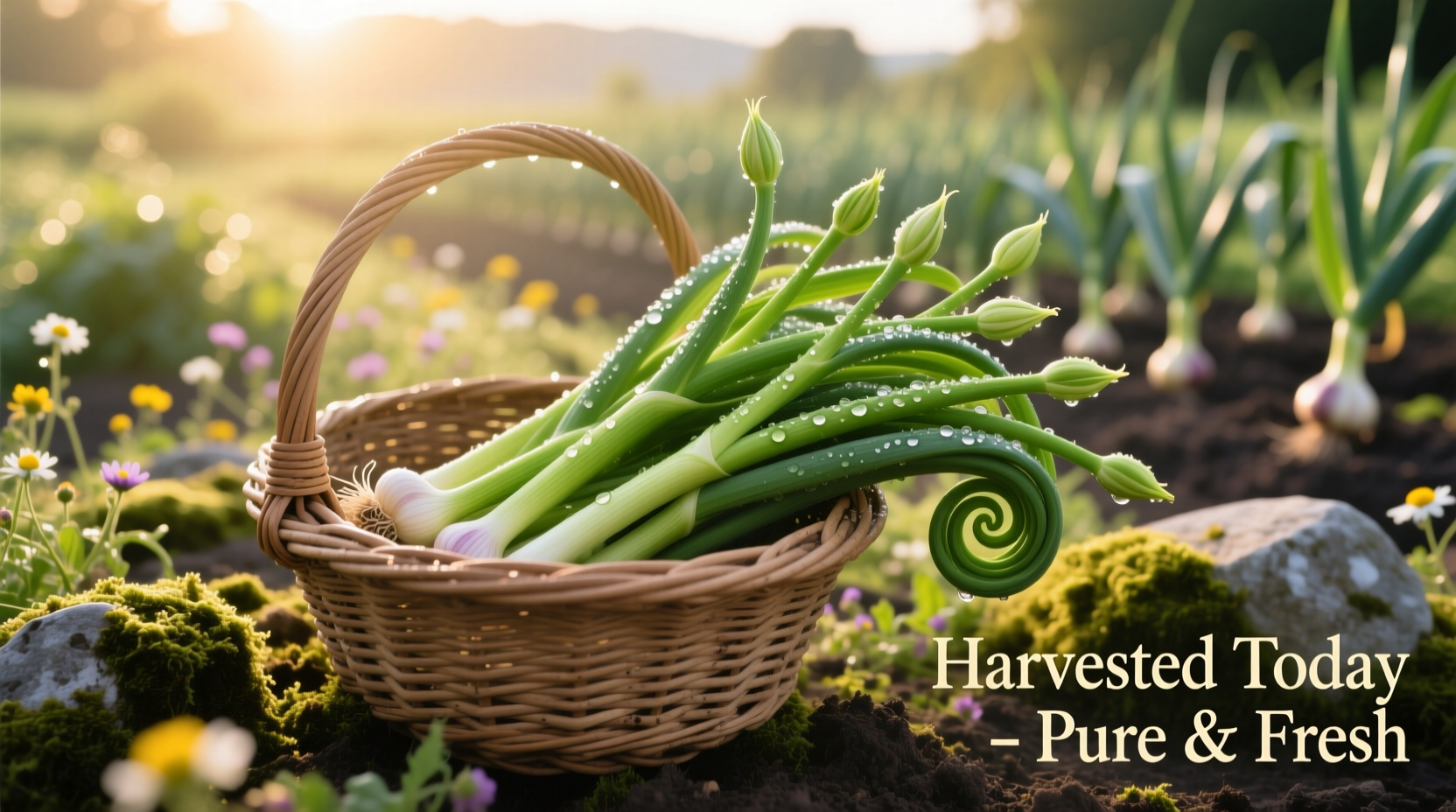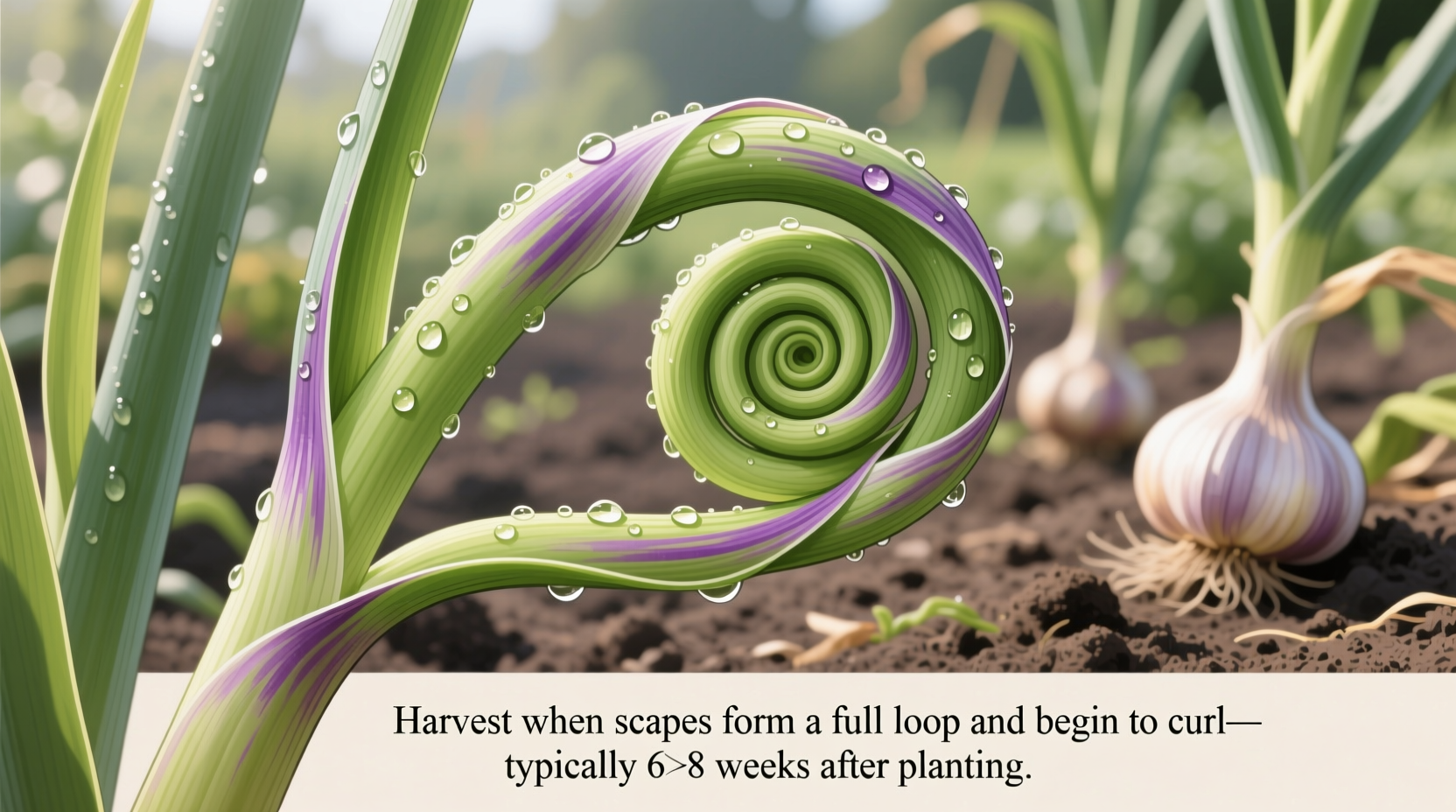Discovering the perfect moment to harvest garlic scapes transforms your gardening experience and elevates your cooking. As a chef who's worked with fresh garlic scapes in both professional kitchens and home gardens, I've learned that timing isn't just important—it's essential for maximizing both your garlic harvest and culinary potential. This guide delivers precise, actionable information so you'll never miss the narrow harvesting window again.
Why Garlic Scape Timing Matters More Than You Think
Garlic scapes are the curly flowering stalks that hardneck garlic varieties produce in spring. If left unharvested, these stalks divert energy from bulb development, resulting in smaller garlic heads. But harvesting too early wastes potential, while waiting too long yields tough, fibrous scapes. The ideal harvesting window spans just 7-10 days in most climates—making precise timing critical.
Your Visual Harvesting Timeline: What to Watch For
Garlic scape development follows a predictable pattern. Monitoring these visual indicators ensures perfect timing:
| Development Stage | Physical Characteristics | Harvest Recommendation |
|---|---|---|
| Initial Emergence | Straight, pencil-thin stalks (2-4 inches) | Wait—too early for harvesting |
| Optimal Harvest Window | Single tight curl, 6-8 inches long, firm texture | Harvest immediately for best results |
| Over-Mature Stage | Multiple loops, woody texture, flower bud visible | Too late—scapes become tough and fibrous |
This timeline aligns with research from the University of Minnesota Extension, which confirms that harvesting at the single curl stage maximizes both scape quality and bulb size. Their field trials demonstrated a 25-30% increase in bulb size when scapes were removed at the optimal time compared to delayed harvesting.
Step-by-Step Harvesting Technique
Follow these professional kitchen-tested steps for perfect garlic scape harvests:
- Check daily during peak season—Scapes can progress from ideal to over-mature in just 48 hours
- Identify the single curl stage—Look for that distinctive tight spiral formation
- Use sharp garden shears—Cut 1-2 inches above the top leaf for clean removal
- Harvest in morning—When scapes are most hydrated and crisp
- Process immediately—Refrigerate or use within 24 hours for peak freshness
Professional growers in the Pacific Northwest—where 80% of US garlic is grown—follow this exact protocol. According to the Washington State University Extension, this method consistently produces the largest bulbs while providing the most tender scapes.

What Happens If You Miss the Window?
Timing mistakes create distinct consequences you'll want to avoid:
- Too early harvesting—Results in minimal scape growth with little culinary value while providing negligible bulb size improvement
- Perfect timing—Yields tender, flavorful scapes and maximizes bulb development (typically 25-30% larger bulbs)
- Too late harvesting—Produces tough, fibrous scapes that require extensive preparation while diminishing bulb size by up to 20%
Culinary Applications for Freshly Harvested Scapes
When harvested at peak freshness, garlic scapes offer remarkable versatility:
- Substitute for garlic cloves in recipes at a 3:1 ratio (3 parts scapes to 1 part cloves)
- Create vibrant pesto by blending with walnuts, Parmesan, and olive oil
- Grill whole scapes for 3-4 minutes for a delicious side dish
- Pickle for extended preservation while maintaining crisp texture
- Add to stir-fries during the last 2 minutes of cooking for subtle garlic flavor
Remember that properly harvested scapes maintain quality for 7-10 days when stored in a damp paper towel inside a perforated plastic bag in your refrigerator's crisper drawer. For longer storage, blanch and freeze for up to 6 months while preserving flavor.
Regional Timing Variations You Should Know
While the single curl principle applies universally, actual harvesting dates vary significantly by climate zone:
- Zones 3-4—Late May to early June (typically Memorial Day weekend)
- Zones 5-6—Mid to late May
- Zones 7-8—Early to mid-May
- Zones 9-10—April to early May
Track your local last frost date as a reference point—garlic scapes typically appear 45-60 days after this date. The Old Farmer's Almanac provides zone-specific planting and harvesting calendars that align with these patterns.
Common Harvesting Mistakes Even Experienced Gardeners Make
Avoid these frequent errors that compromise your garlic harvest:
- Waiting for multiple curls—This is the most common mistake, resulting in tough, fibrous scapes
- Harvesting on a schedule rather than by visual cues—Weather variations mean dates differ yearly
- Using dull tools that crush rather than cut—Creates damage that invites disease
- Leaving cut stubs too long—Increases disease risk and slows healing
- Ignoring regional climate variations—Applying generic calendar dates without local adjustment
Professional garlic farmers in Gilroy, California (the self-proclaimed "Garlic Capital of the World") emphasize that visual assessment trumps calendar dates every time. Their decades of experience confirm that the single curl indicator remains reliable regardless of seasonal temperature fluctuations.











 浙公网安备
33010002000092号
浙公网安备
33010002000092号 浙B2-20120091-4
浙B2-20120091-4